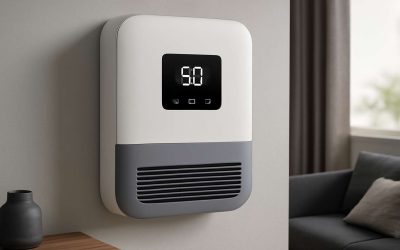
Humidity is a measurement of water vapour in the air. It is a natural part of the atmosphere, and its level affects our comfort. Several factors influence its levels, including temperature, relative humidity, and wind speed. Increasing humidity causes more discomfort. Similarly, low humidity makes materials brittle. In addition, low humidity is a common cause of eczema, which can make skin dry and itchy.
High humidity levels are often associated with rain. However, it is important to remember that a high level of humidity does not always mean rain. Rain occurs when the atmospheric pressure changes as the air ascends. This causes the rising air to be unable to hold enough water droplets to form a rain cloud. Even if the relative humidity at the surface is below 100%, a precipitation may still occur.
Despite being invisible to the human eye, water vapor is an integral part of the water cycle. Water vapor is produced through evaporation from lakes, oceans, and other bodies of water. The evaporation process also continuously removes moisture from the air. A low amount of humidity can be uncomfortable, making it difficult to concentrate on a task.
Humidity can be measured by a hygrometer, which is a device that measures water vapor. Most hygrometers include a small display screen and thermometer to help you monitor the humidity. If the reading is too high, you can watch for the signs of increased humidity: peeling paint, wallpaper, and fogging windows.
Relative humidity is the ratio of the amount of water vapor in the air compared to the amount of water vapor that could potentially be in the air at the same temperature. It is expressed as a percentage from 0 to 100. Low relative humidity is a problem because it can increase your risk for colds, coughs, and flu. High humidity can have other negative effects, such as aggravating eczema, increasing your chances of developing allergies, and causing a rash.
Absolute humidity, on the other hand, is a measure of the total amount of water vapour in the air. Absolute humidity is expressed as grams of moisture per cubic meter. Generally, the warmer the climate, the higher the humidity levels are. Colder climates tend to have lower humidity.
The absolute dew point is the lowest possible temperature at which there is sufficient water vapor in the air to form a cloud. This dew point corresponds to the temperature of the air, and is also used to measure humidity.
Absolute humidity is a more stable value than other climate parameters. For example, an 80-degree day with a dew point of 60 would produce a relative humidity of 50%. However, the highest known dew point was 95 in Dhahran, Saudi Arabia in 2003.
Because the atmosphere is made up of a variety of gases, its mixing ratio can be very low. This is particularly the case in cold polar air. Since cold air is less able to hold as much water vapor as warm air, the atmosphere has a higher relative humidity.



0 Comments